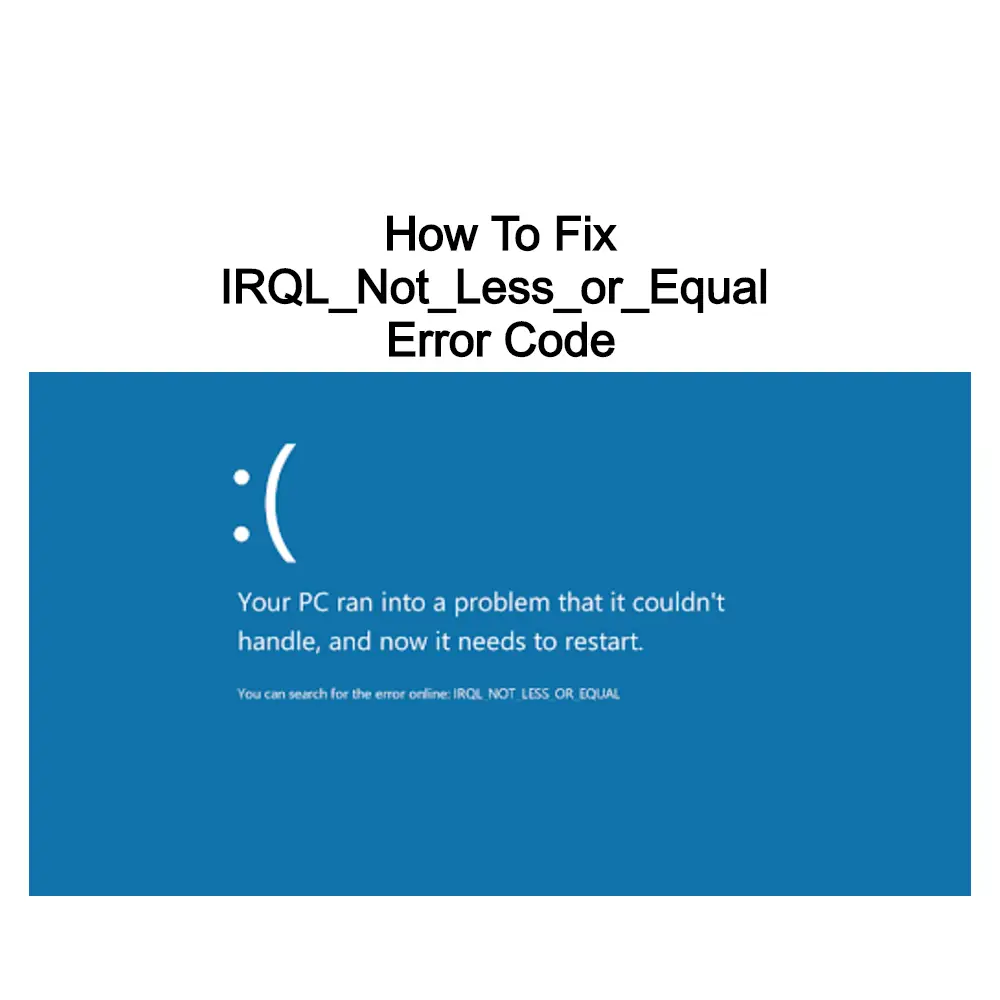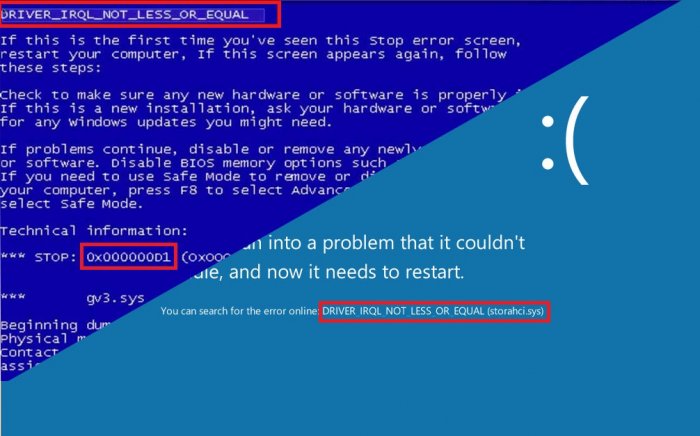
While you can’t stop BSODs, you can prepare in advance for them by backing up your important files to cloud storage. If your PC suffers from an irql_not_less_or_equal BSOD error, the steps above should help you resolve it. If it is, you’ll need to replace those components (or replace your PC entirely).

Repeat these tests several times to determine if your hardware is failing.

You can also run similar tests to check for bad system memory, as these are the most likely causes behind an irql_not_less_or_equal BSOD where hardware failure is suspected. If your PC is clean, you can run a CPU stress test to check if your processor is working correctly. Repeat this step at least two or three times. When you start to see the Windows logo (indicating that Windows is loading), press your PC’s restart button (or select and hold the power button) to interrupt the process. If Windows isn’t booting up, you can boot into Start Mode by powering up your PC.If you’ve recently updated your PC or installed a new driver, you can use Safe Mode to roll back your changes using the steps in the section below. In most cases, this should allow you to bypass a BSOD error if a driver or software issue is at fault, although it’s unlikely to help if your hardware is faulty. Safe Mode is Windows’ troubleshooting mode, booting up the Windows desktop with the bare minimum number of services, drivers, and apps required to run it. To help you diagnose an irql_not_less_or_equal BSOD error, especially if Windows isn’t booting up properly, you should boot into Safe Mode.

A BSOD loop is where your PC reboots following a BSOD, with another BSOD error message appearing immediately after the reboot process completes, repeating the cycle indefinitely. Unfortunately, this makes it difficult to troubleshoot the issue, especially if you’re stuck in a BSOD loop.

Boot Windows in Safe Mode for TroubleshootingĪfter any BSOD error, your PC will reboot.


 0 kommentar(er)
0 kommentar(er)
